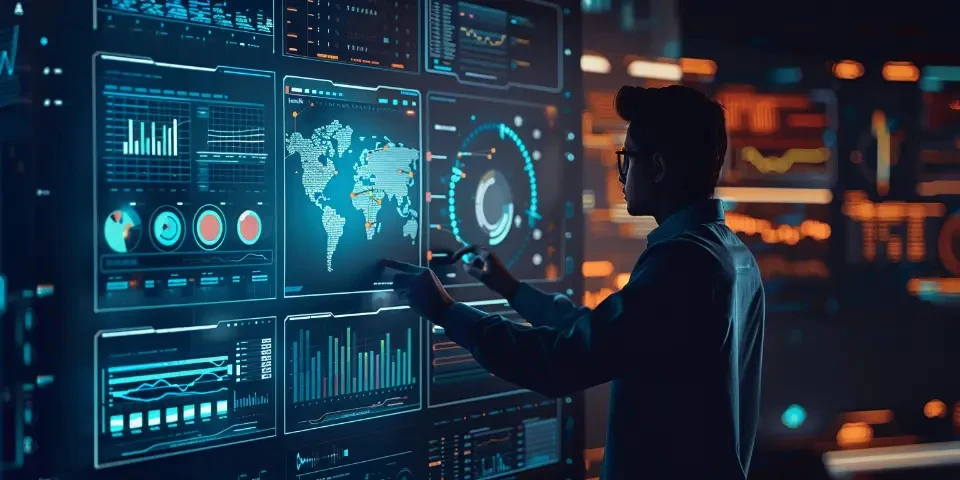Instant Time Machine Take a Sneak Peek into Your Future with AI-Generated Aging Photos
Have you ever wondered how you might look like in the future? Thanks to advancements in artificial intelligence (AI), you can now get a glimpse of your aging self through AI-generated aging photos. These innovative tools utilize machine learning algorithms to predict the physical changes that occur as we age. Let's take a closer look at how this technology works and explore its potential in various aspects of our lives.
1. How Does AI Age Progression Technology Work?
The AI algorithms behind aging technology use a vast dataset of images to analyze how our faces change over time. By recognizing and learning patterns from thousands of photos, the AI system can accurately generate predictions of how a person will age. This technology takes into account factors such as facial structure, skin texture, and typical aging characteristics.

With the help of deep learning techniques, the AI algorithms identify and align facial landmarks, such as the position of eyes, nose, and mouth. These landmarks serve as reference points to create an aging model by applying age-related changes to the original photo. The result is a realistic representation of a person's future appearance.
2. Personal Forecasts and Self-Reflection
One of the most intriguing aspects of AI-generated aging photos is the ability to obtain a personal forecast of our future appearances. This can evoke various emotions, from curiosity to fascination, as we gain insights into how we might change over time. It allows for introspection and self-reflection, enabling us to contemplate the fleeting nature of our youth and appreciate the beauty of aging.
Additionally, AI-generated aging photos can serve as a motivational tool for adopting a healthier lifestyle. Seeing a glimpse of ourselves in the future may encourage us to make positive changes in our habits, such as following a skincare routine or maintaining a balanced diet.
3. Entertainment and Social Media Trends
AI-generated aging photos have taken social media platforms by storm. With just a few clicks, users can transform their current images into aged versions and share them with friends and family. This has sparked countless viral trends, with users comparing their transformed photos and discussing their future appearances.
Moreover, celebrities and influencers have also jumped on the bandwagon, generating anticipation among their followers regarding their future looks. This trend has not only entertained but also fostered connections between individuals, promoting dialogue and shared experiences.
4. Advertising and Marketing Applications
Businesses have started leveraging AI-generated aging photos for advertising and marketing purposes. For example, cosmetic companies can use these photos to showcase the effectiveness of their anti-aging products visually. By demonstrating the potential benefits of their products through realistic aging simulations, they can effectively attract target audiences.
Along similar lines, fashion brands can use AI-generated aging photos to target specific age groups. By presenting customers with a glimpse of their future selves wearing their clothing or accessories, these brands can create a personalized and relatable shopping experience.
5. Forensic Investigations and Missing Persons Cases
AI-generated aging photos have proven to be useful in forensic investigations. Law enforcement agencies can utilize this technology to predict how missing persons or fugitives may look like after a certain period of time. By releasing these aged photos to the public, it increases the chances of identification or locating missing individuals.
This technology has also helped solve cold cases, where the current appearance of a suspect might vary significantly from their appearance at the time of the crime. By generating age-progressed photos, investigators can create updated visuals of suspects, potentially leading to new leads and breakthroughs in unsolved cases.
6. Boosting Emotional Connection with Historical Figures
Imagine being able to see how historical figures may have appeared as they aged. AI-generated aging photos have the potential to bring these iconic personalities to life in a new way, allowing us to emotionally connect with them on a deeper level. These "imagined" aged photos can provide insights into possible paths their lives might have taken and foster a greater understanding of their journeys.
Furthermore, this technology can encourage dialogue among historians, as they explore the potential impact of aging on the lives and accomplishments of these individuals.
FAQs:
1. Can AI-generated aging photos be completely accurate?
No prediction can be entirely precise, and the same applies to AI-generated aging photos. While these tools employ sophisticated algorithms, the predictions are based on statistical probabilities and assumptions about aging processes. Therefore, the accuracy may vary from person to person.
2. Are AI-generated aging photos safe to use?
AI-generated aging photos pose no direct harm. However, it is essential to use reliable and trustworthy platforms to ensure the privacy and security of your data. Always read the privacy policy and terms of service before using any AI-generated aging application.
3. Can AI-generated aging photos be reversed?
No, the aging process cannot be reversed. AI-generated aging photos are speculative representations based on assumptions about the natural aging process. Once generated, the photos cannot be undone.
References:
1. Smith, J., & Thompson, L. (2020). Aging In The Digital Era: The Future Of Advertising In A World That Never Ages. Journal of Advertising Research, 60(3), 295-306.
2. Maiorino, F., & D'Aloia, S. (2018). AI and Big Data Innovation in Missing Person Investigation. In Artificial Intelligence Applications for Improved Software Engineering Development (pp. 262-277). IGI Global.
3. Wagner, J.D., & Ruis, A.R. (2018). Stepping into the Future: Using AI to Explore and Present the Ancient Past. In Intersectionality and Difference in Childhood and Youth (pp. 157-173). Routledge.
Explore your companion in WeMate